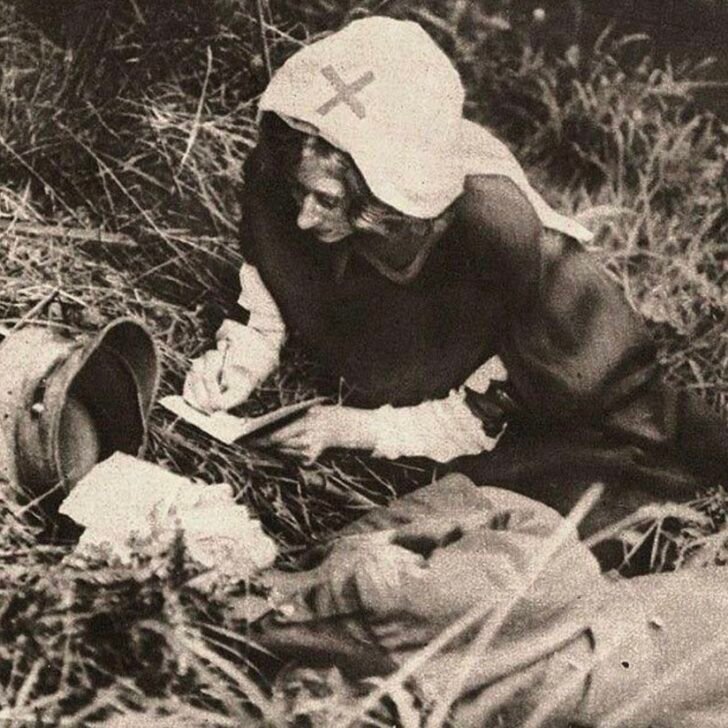Have you ever heard of a surgery that had a 300% mortality rate? You probably haven’t because it has only happened once. Let’s hope no one manages to beat that. Robert Liston was known for this surgery, among other things.
He was successful in some areas, and his speed caused careless mistakes in others. Despite how his fellow surgeons felt about his surgical preferences, he was a surgeon, an inventor, and a trailblazer in his time.


With his success came a personality full of bravado and, some may say, overconfidence.
He deeply cared about his patients and was not afraid to fight his fellow surgeons if he caught wind of them misbehaving. Robert Liston was also like the real-life Derek Shepherd from Grey’s Anatomy.
He took on cases that other Doctors deemed too severe. He wasn’t afraid of lost causes.
In this article, you’ll learn about how Robert Liston was ahead of his time and how there are still risks, no matter how excellent or brilliant a surgeon is.
Robert Liston’s Impressive Speed
He was known as “the fastest knife on West End,” and his surgical time was impressive. A fast surgeon might have high mortality rates, you would think.
Despite a handful of devastating accidents during surgery, he only lost one out of ten patients. At the time, this was groundbreaking. Most surgeons lost one in four on average.
Robert Liston performed amputations rapidly, which, at the time, was the best option. The reason he had to operate with lightning speed is because it reduced the amount of pain the patient felt. It also reduced the risk of shock and blood loss.
He could do amputations in under three minutes. At one point, he did the amputation in under 30 seconds! He proudly asked his audience during the surgery to “time him.” The bravado would soon cause some horrific mistakes to occur.
One incredible instance of his speed and accuracy was when he removed an impressive-sized tumor in under five minutes. It was a 45-pound scrotal tumor. The patient had to use a wheelbarrow to carry it. The weight of that tumor was like picking up a five-gallon jug of water.
Another notable tumor removal was Maryann Griffiths.
She had a disfigured face due to the impressive size of the tumor and its being located on the superior maxillary bone. It took under 8 minutes to remove the tumor. At the time, this was a significant triumph for the 1800s.
The Freak Accident That Resulted In A 300% Mortality Rate
Robert Liston’s fixation on speed is what caused his most infamous surgery to take place. In Liston’s day, an assistant was required to hold the leg still during amputation. After the patient was prepped, the assistant held the leg.
Robert Liston immediately raised his hand with a scalpel and, in one quick motion, sliced his assistant’s fingers clean off and brushed a bystander while raising his blade again. The bystander’s coat was cut, but not his skin.

Regardless of not enduring an injury, he died from “fright.” Which meant shock was his cause of death. He dropped dead on the spot. Both the patient and Liston’s assistant died following the surgery due to hospital gangrene.
It was a common problem in the 1800s. That is how Robert Liston’s surgery is known for the highest mortality rate a surgeon ever had. Three lives equals a 300% fatality rate. Luckily, his talent and reputation persevered despite this devastating mistake.
Other Crazy Mishaps During Dr. Liston’s Career
While speed was essential in the 1800s, it caused Liston to harm one patient and even kill one by mistake.
During one surgery, he was being timed by the crowd, and in his haste to beat the clock, he accidentally severed the patient’s leg and testicles. Remember, the patient was awake for this surgery.
The next patient was a sad case. He got into an argument about a young boy. Robert Liston saw a lump on the boy’s neck and decided to remove it.
He thought it was a type of skin tumor. Liston questioned if anyone had seen an aneurysm in someone so young.
However, it was an aneurysm in the carotid artery. The young boy quickly bled to death. With all his successes, it’s no surprise his confidence is legendary.
However, this is an example of when self-doubt could have saved a child’s life.
Robert Liston Vs. Robert Knox
Knox paid for murdered people’s bodies and used them for dissections for medical students. He knowingly bought murder victims from the famous Burke and Hare killers. Knox was fond of a victim’s body, whose name was Mary Paterson.

They brought her to him for payment while her body was still warm. When Knox asked how she died, they claimed it was whiskey. Her cause of death, however, was suffocation.
She was a poor, beautiful woman, and her life was taking a turn for the better before she was suffocated by Burke and Hare.
Robert Knox bought the body, but instead of using it to practice medicine, he preserved her in whiskey and had artists draw pictures of her. She was posed in a voyeuristic way.
Knox was proud of himself for having Mary’s remains and kept her body for three months. Something unexpected happened when he went to brag about it to Robert Liston. Robert Liston punched Knox to the floor and retrieved the body.
His reason? He wanted to give her a proper burial. This is believable because Liston was a caring man who would not stand for the vulgarity or cruelty of anyone’s actions.
However, conflicting evidence supports another scenario of Knox preserving the body for three months and then dissecting it for medical purposes. What do you think happened?
What Made Robert Liston Different From Other Surgeons?
One notable difference between Robert Liston and other surgeons was his obsession with cleanliness. At the time, it wasn’t uncommon for a doctor to be covered in blood from one surgery and immediately go to the next.
At this time, no one knew about germs and how they spread. Surgical instruments were rarely cleaned.
Liston not only cleaned his tools but washed his hands frequently. He even wore clean clothes to each surgery. Undoubtedly, this was a massive reason his mortality rates were lower than the average. Not counting the famous 300% mortality rate surgery, of course.
He saved more lives than he cost. Another reason he was different was he knew the importance of surgery but understood that sometimes it’s best not to cut. In the 1800s, they would amputate your leg if it was broken. By using splints, he prevents amputations for femur fractures.
Liston was also the first Doctor in Europe to operate using anesthesia. The anesthesia was known as ether, a muscle relaxant with a long induction period. It was also highly flammable.
He was always compassionate about the level of pain his patients felt. At the time, some surgeons believed that the more pain a patient felt, the better they recovered.
Liston rejected this idea, along with the use of hypnotism for pain management. Given his interest in patient care, it’s no surprise he would be among the first to apply ether to his operations.
Inventions That Are Still Used Today
A notable creation was the Long Liston splint. While other splints existed at the time, his splint was a more innovative way to immobilize femur fractures. The hope was that doing it this way would reduce the chances of the limb shortening over time.

It involved a board from the side of the chest past the foot with intricate wrapping. It was made with easily accessible materials. Although Thomas’ traction splint was preferred, the Long Liston splint was essential during WWI due to the lack of equipment.
His splint was in several medical books for first aid up until the 1980s. There are some who, to this day, urge for the Long Liston to be included again in first aid books. This would benefit more rural areas.
He also invented a double-edged knife for amputations. It was steel with a nickel-plated handle. This was essential for preventing rust when boiling the tool.
The tool was so successful it’s still used for amputations. Jack the Ripper was fond of the Liston knife, and it was his weapon of choice for his victims.
Conclusion
While Robert Liston undoubtedly made some serious and even tragic mistakes during his career, it’s essential to recognize that he was an incredible surgeon in his day.
Yes, the freak accident that led to a 300% mortality rate in one surgery will forever be remembered as a dark mark on his record. But let’s remember that Liston’s talent and reputation persevered despite this devastating mistake.
Liston’s boldness and speedy approach sometimes led to unfortunate outcomes. But it’s also worth noting that his confidence and skill were legendary, and he had numerous successful surgeries under his name.
So, while his mistakes cannot be disregarded, it’s important to remember that he was a product of his time. He embodies the complexity of the medical field in the 1800s with a mixture of incredible skill and unfortunate blunders.
Despite his flaws, Liston’s legacy lies in his contributions to medical history and his undeniable talent. And in the end, it’s fair to say that he did more good than harm.
Sources
https://collections.nlm.nih.gov/catalog/nlm:nlmuid-66830590R-bk













Leave a comment